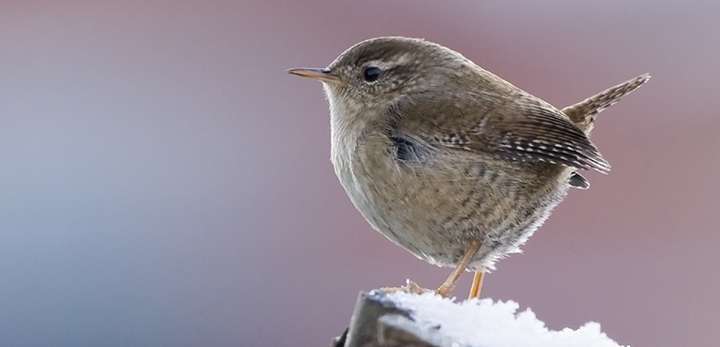Northern bird found to be more resilient to winter weather

One of the UK's most widespread songbirds, the Wren, varies in its resilience to winter weather, depending on where it lives in Britain, according to new UEA research.
Findings published today in the Royal Society journal Open Science reveal that Scottish Wrens are larger than those living in southern Britain, and more resilient to hard winter frosts.
Populations of small birds may decline following periods of cold winter weather, something that is probably linked to low temperatures and difficulties in finding sufficient insect prey.
Researchers at the British Trust for Ornithology (BTO) and UEA's School of Biology studied one of the UK's smallest songbirds, the Wren.
They found that populations inhabiting regions where winters are more severe show some form of adaptation.
The team used information on Wren populations that had been collected by volunteers participating in the Breeding Bird Survey - the main scheme for monitoring the population changes of the UK's common breeding birds, run by the BTO, the RSPB and the Joint Nature Conservation Committee (JNCC).
The researchers found that Wren populations were susceptible to severe winter weather, measured in terms of the number of days with a ground frost. However, northern populations were found to be resilient to winters with up to 70 per cent more frost days than southern populations, suggesting a degree of local adaptation.
James Pearce-Higgins, BTO director of Science and one of the authors, said "This work indicates that each Wren population is closely adapted to its local climate. There was a close correlation between the historic regional climate and the degree to which the population was resilient to severe winters."
Using information collected by bird ringers, the team also found that Wren body mass was approximately 5 per cent lower in the warmest (south-west) than in the coldest (east Scotland) region.
Lead author Catriona Morrison, from UEA, said: "Large individuals are likely to be favoured in colder regions due to the thermal advantage of larger size and their ability to store more body fat. Our findings match the pattern seen more wildly across other species – a pattern known as Bergmann's rule."
The findings of this study have particular relevance to our understanding of how birds and other species respond to climate change.
Although this work shows that wren populations may adapt to at least some change in temperature, they are short-lived and therefore probably more adaptable than most other bird species.
Ultimately, the ability of species to cope with climate change will depend upon whether the future rate of warming exceeds their ability to adapt.
'Winter wren populations show adaptation to local climate' is published in the Royal Society journal Open Science on June 29, 2016.
More information: Winter wren populations show adaptation to local climate, Royal Society Open Science, rsos.royalsocietypublishing.or … /10.1098/rsos.160250
Journal information: Royal Society Open Science
Provided by University of East Anglia



















